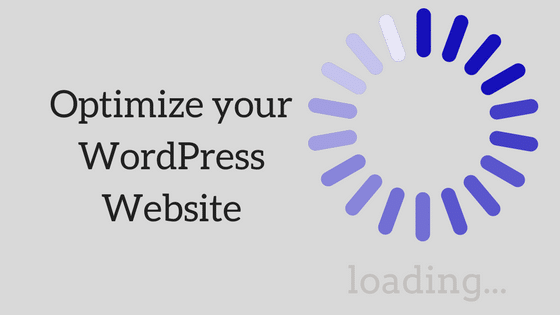In the digital landscape saturated with a plethora of tools and platforms catering to diverse needs, three distinct offerings stand out: HashBar, Foobar, and Notibar. Each platform serves a unique purpose and targets distinct user demographics, offering a range of features and functionalities tailored to specific use cases. Whether one seeks to amplify social media presence, collaborate on coding projects, or streamline task management, these platforms aim to provide solutions that enhance productivity and efficiency.
Let’s delve deeper into a comparative analysis of HashBar, Foobar, and Notibar, exploring their respective strengths, features, and suitability for different user needs.
Table of Contents
ToggleWhat is HashBar?
HashBar is a social media management tool designed to streamline the process of sharing content, particularly on platforms like Twitter. It offers a variety of features aimed at enhancing engagement, visibility, and analytics. With HashBar, users can schedule tweets, access hashtag suggestions, monitor analytics to track engagement metrics and integrate with other social media platforms. The platform is top-rated among social media managers, marketers, influencers, and individuals seeking to optimize their presence and reach on Twitter.
What is Foobar?
Foobar is a platform tailored for coding and software development communities. It provides a centralized space for developers, programmers, and tech enthusiasts to collaborate, share code snippets, discuss programming topics, and work on projects together. With features such as syntax highlighting for various programming languages, code collaboration tools, integration with version control systems like Git, and project management functionalities, Foobar caters to the specific needs of the coding community.
What is Notibar?
Notibar WordPress plugin is a powerful tool that enhances your website with a prominent top notification bar for sharing important announcements. With ease, you can set it as a sticky header, ensuring visibility even while scrolling. The plugin offers flexible options for managing the Dismiss button: it can be disabled, closed permanently, or toggled for visitors’ convenience. Experience real-time customization with the Instant Live Preview mode, allowing you to visualize how each setting impacts the notification bar before making it live.
Comparison Table
| Aspect | HashBar | Foobar | Notibar |
|---|---|---|---|
| Purpose | Social media sharing and engagement, especially Twitter | Coding and software development community platform | Task and notification management |
| Features | – Scheduled tweets <br> – Analytics <br> – Hashtag suggestions <br> – Integration with social media platforms | – Syntax highlighting <br> – Code collaboration tools <br> – Version control integration <br> – Project management features | – Reminders <br> – Calendar integration <br> – Priority settings for tasks <br> – Notifications across devices |
| Target Audience | Social media managers, marketers, influencers | Developers, programmers, coders, tech enthusiasts | Professionals, students, task-oriented individuals |
| Usability | User-friendly interface, intuitive controls | Geared towards coding environments, requires familiarity | Simple interface, easy task, and reminder management |
| Integration | Integrates with social media platforms like Twitter | Integrates with version control systems like Git, code repositories | Likely integrates with calendar apps, task management tools |
| Customization | Customizable tweet content, scheduling options, hashtag strategies | Customizable coding environments, collaboration settings | Customizable reminders, task organization, notification preferences |
HashBar vs Foobar vs Notibar
let’s compare HashBar, Foobar, and Notibar across various points:
1. Purpose
HashBar: Primarily focuses on social media sharing and engagement, especially Twitter.
Foobar: Designed for coding and software development communities, providing a platform for sharing code snippets, discussing programming topics, and collaborating on projects.
Notibar: Geared towards notifications and reminders, helping users manage their tasks and schedules effectively.
2. Features
HashBar: Offers features like scheduled tweets, analytics for tracking engagement, hashtag suggestions, and integration with other social media platforms.
Foobar: Provides syntax highlighting for various programming languages, code collaboration tools, version control integration (like Git), and project management features.
Notibar: Includes reminders, calendar integration, priority settings for tasks, notifications across devices, and possibly features like note-taking and task organization.
3. Target Audience
HashBar: Social media managers, marketers, influencers, and individuals looking to boost their presence on platforms like Twitter.
Foobar: Developers, programmers, coders, and tech enthusiasts who want a platform tailored to their specific needs for sharing and discussing code.
Notibar: Professionals, students, and anyone who needs assistance with organizing their tasks, managing schedules, and staying on top of notifications and reminders.
4. Usability
HashBar: User-friendly interface with intuitive controls for scheduling tweets, monitoring analytics, and engaging with followers.
Foobar: Geared towards users familiar with coding environments, offering features and workflows conducive to software development practices.
Notibar: Simple and straightforward interface focused on managing tasks and reminders efficiently, accessible across multiple devices for convenience.
5. Integration
HashBar: Integrates with popular social media platforms like Twitter, potentially offering cross-platform functionality for wider reach.
Foobar: Offers integration with version control systems such as Git, code repositories like GitHub, and possibly with other developer tools.
Notibar: Likely integrates with existing calendar applications, task management tools, and notification systems to provide seamless functionality across devices and platforms.
6. Customization
HashBar: Provides options for customizing tweet content, scheduling frequency, and hashtag strategies based on user preferences and marketing goals.
Foobar: Allows customization of coding environments, syntax highlighting themes, collaboration settings, and project management workflows.
Notibar: Offers customization options for setting reminders, organizing tasks into categories, adjusting notification preferences, and possibly personalizing the user interface.
Which Plugin Is The Best And Why?
Determining the “best” plugin depends on your specific needs, preferences, and website requirements. However, let’s evaluate the potential strengths of each plugin based on their described functionalities:
HashBar
Best for: Social media managers, marketers, influencers.
Strengths: Offers features specifically tailored for social media engagement, such as scheduled tweets, hashtag suggestions, and analytics tracking. Ideal for those focused on maximizing their presence and impact on platforms like Twitter.
Foobar
Best for: Developers, programmers, and coding communities.
Strengths: Provides a dedicated platform for coding-related activities, including code sharing, collaboration tools, syntax highlighting, and version control integration. Perfect for facilitating communication and collaboration within coding projects or discussions.
Notibar
Best for: Website owners looking to display important announcements.
Strengths: Offers a straightforward solution for adding a top notification bar to websites, enabling the display of significant announcements such as holiday notices, COVID-19 updates, or event notifications. The Instant Live Preview mode ensures easy customization and visualization of the notification bar before publishing.
Final Thought On HashBar vs Foobar vs Notibar
In conclusion, each plugin—HashBar, Foobar, and Notibar—offers unique features and functionalities tailored to different purposes and user demographics. When selecting the right plugin for your needs, it’s essential to consider factors such as your specific goals, target audience, and the functionalities required to achieve them effectively. Whether you’re focused on social media engagement, coding collaboration, or website notifications, there’s likely a plugin that aligns with your objectives. By carefully evaluating the strengths and capabilities of each plugin, you can make an informed decision that enhances your productivity, engagement, or website functionality.
Interesting Reads:






